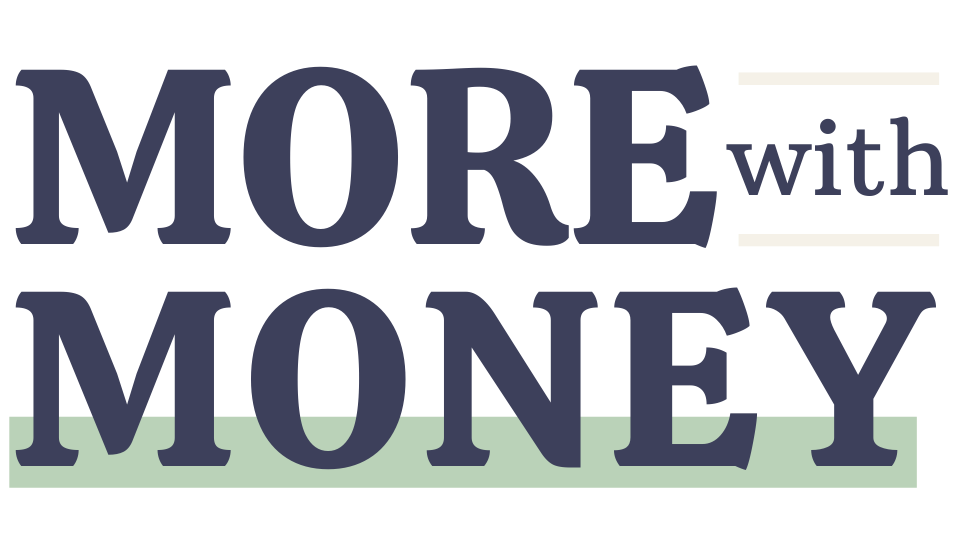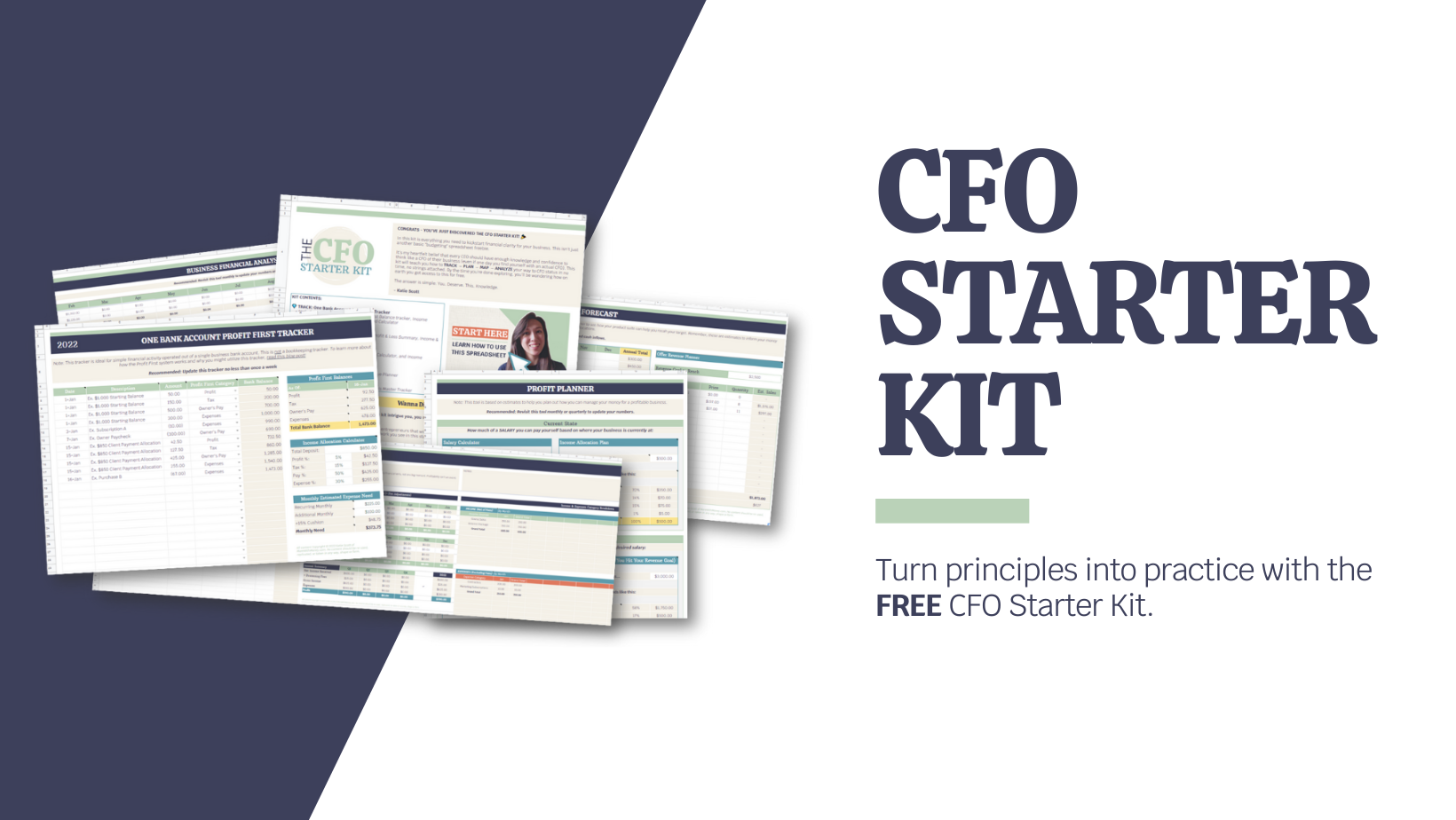How to Track Business Finances Like a CFO (+ the Step Everyone Misses)
As a business owner, you've probably been told you need to track your finances. But what does that look like? How do you do it? What do you do with the numbers once you track them? There's more to tracking your finances than just recording income and expenses, so let's talk about it.
This is Part 1 of 3 in the CFO Habits Series!
Why track business finances?
I consider TRACKING to be one of the key CFO-level habits of any CEO of a business. It’s important to maintain a record of the financial activity in your business for several purposes.
Data is power. It gives us the ability to objectively assess our situation without falling victim to the way our thoughts, emotions, fears, and anxieties can distort reality.
Research has shown that people who measure their progress are far more likely to reach their goals!
Tracking establishes a baseline, focuses your attention, keeps you accountable, and helps you stay consistent.
Tracking is important for being compliant legally and for taxes.
What to Track in Your Business
When I refer to tracking your financial activity, that means:
Track Your Income
You need to keep a provable record of everything your business earns doing what it’s in business to do. Not only does this provide data to you about how well you’re doing, but it’s also important for tax obligations. You need an accurate record of how much money you earned because a percentage of that needs to be paid back to the government.
Track Your Expenses
Again, not only does this provide data to you about what it costs to run your business, but it’s also going to reduce how much you owe in taxes. The government basically says “Go ahead and reinvest what you need back into your business, then we’ll tax what’s leftover.”
However, because this reduces the amount of taxes they get to collect, they do have rules for what you can claim as a deductible business expense. And it’s very important that you can prove these expenses actually happened (save your invoices and receipts!).
Deductible expenses are costs that are considered ordinary and necessary for you to be able to do what you’re in business to do. Imagine you’re sitting at a table with a tax auditor - ask yourself if you’d be willing and able to defend that expense to them.
Track Your Cash Flow
There are other ways that money moves into or out of your business that don’t count as income or expenses. While it may not be as critical for your taxes, it’s still very important for you to have a record of this movement so that you know where your money moves! This might include:
Paying yourself as the owner or contributing money to your business as the owner
Paying off debt balances (though interest expense IS deductible)
Transferring money between accounts (such as checking to savings)
Track Everything!
Does your business have inventory to manage? Does your business need to save up money for a certain purpose (or multiple purposes)? Is there additional data you can track to give you more context - things like conversion rates of sales pages, usage of certain tools you pay for, or the number of hours spent on a project? Track it! Remember, data is power.
How to Use the Data You Track
The obvious context for tracking your finances as a business owner is your bookkeeping. You may know this process as keeping a spreadsheet or using a tool like Quickbooks, Wave, or Xero (among many others).
The real PROFIT-BOOSTING secret to tracking your finances
However, I believe there is another element of tracking that many, many people miss - and it’s the secret to achieving true financial wellness and profitability in a business.
When you’re tracking your income, not only should you be tracking it as it happens, but you should also be tracking WHAT “JOBS” YOU’VE ASSIGNED IT TO.
Most people stop at “I earned $300 today.”
I want you to take one extra step and say, “$15 will go to savings, $45 to taxes, $150 towards my next paycheck, and the remaining $90 will go towards my expenses.” (If you’re curious where these numbers come from, check out my post on Profit First!)
And then, when you track your expenses, you can go from just saying “I spent $30” to ALSO saying, “And I have $60 left to spend.”
If you can get in the habit of leveling up your tracking to include this one extra step, you’ll be tracking your finances like a real CFO (and seeing the profit boost as a result).
How to Track Business Finances
So how exactly can you create a system that allows you to do all of this? You may choose to track your bookkeeping and Profit First budget separately like I do, or you may look for an all-in-one solution (note that most bookkeeping programs do not have proactive budgeting functionality).
The method you choose will have to depend on your own needs and preferences.
Option 1: A Spreadsheet System
The CFO Starter Kit is designed to allow you to have a fully functional tracking system for both bookkeeping and Profit First budgeting. This system is more manual, but it can be a great entry point for someone just starting or even a good long-term solution for someone with a simple financial situation.
Option 2: YNAB (You Need A Budget)
YNAB is my recommended budget tool for business owners. Not only is it the perfect app for maintaining your Profit First fund balances, but it actually CAN double as a bookkeeping record if you use it right and your finances are simple enough. This is probably the best potential solution for being able to track once but get double the functionality.
Option 3: Blended Systems
Personally, I use YNAB for my Profit First budgeting and Quickbooks Online for my business bookkeeping. You also may choose to outsource data entry to a bookkeeper. This is fine, and a great way to alleviate the pressure on you to track twice! But you still have a financial responsibility as the CEO of your business to manage your own day-to-day budget.
The important thing is to find a system that works for you - meaning that it’s something you can reasonably keep up with and it’s giving you the information you need.
How to Get Started With Tracking Business Finances
Choose a system to start with (a spreadsheet like the one in The CFO Starter Kit is a great low barrier-to-entry starting point).
Start with just the current month. Go back to the first of the month and record everything that has occurred in your business bank account up to today.
Then be sure to categorize what every transaction was - whether it be income, an expense, a transfer between accounts, the payment of debt, etc.
Then, starting with TODAY’s available balance in your bank, create a plan for exactly what you’ll do with that balance. Use the Profit First Tracker in the Kit to help you.
Keep it simple and just focus on cultivating the habit. In the future, you can play around with getting more detailed or trying other systems. But first, tracking has to be important to you!
I invite you to share how you like to track your finances and make your financial decisions in the comments below!
Click here to read the rest of the CFO Habits Series here on the blog
Are you ready to take your financial journey to the next level? Then you may be ready to check out the More With Money Academy!
This ever-growing collection of online courses and trainings are specially designed to support entrepreneurs like you on your path to financial wellness. The Academy contains carefully designed courses that are easy to understand and implement so that you can be empowered with the practical concepts, streamlined systems, and powerful mindset to transform your business and personal finances.
Click here to explore what the More With Money Academy has to offer!
Pin for later
I'd love to continue the conversation in the comments! Feel free to share your thoughts.
Until next time!










